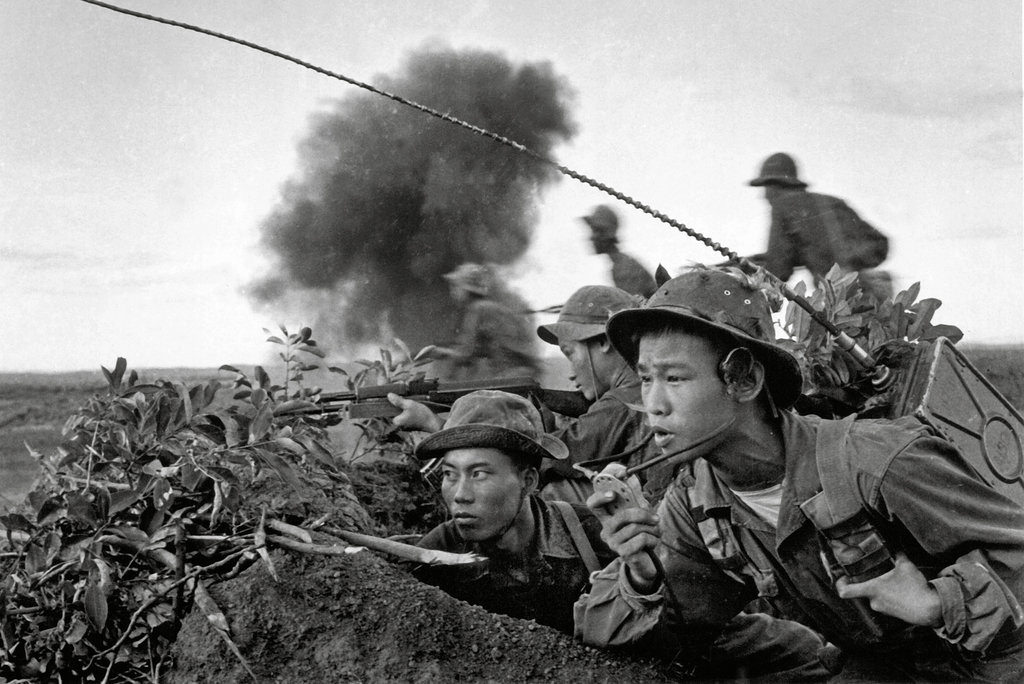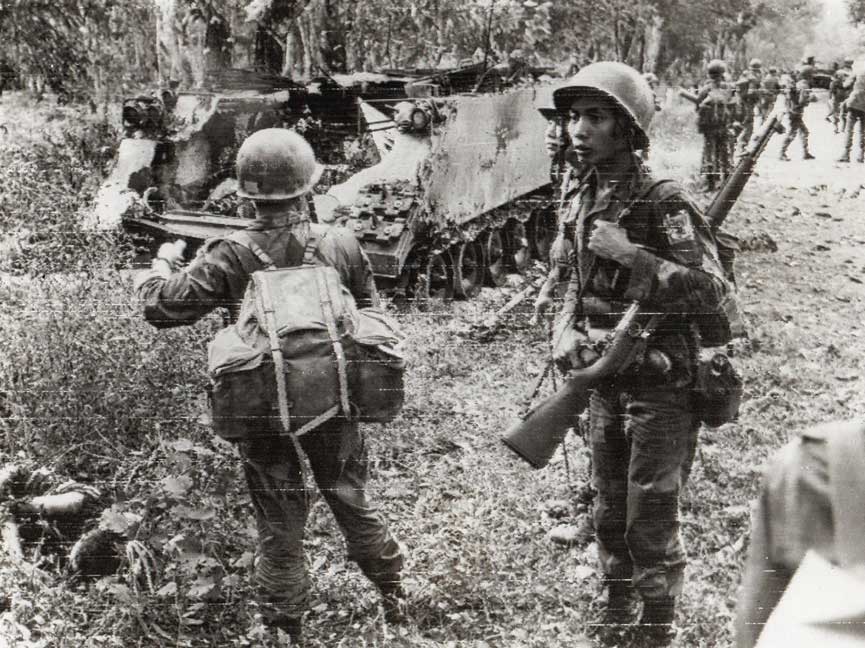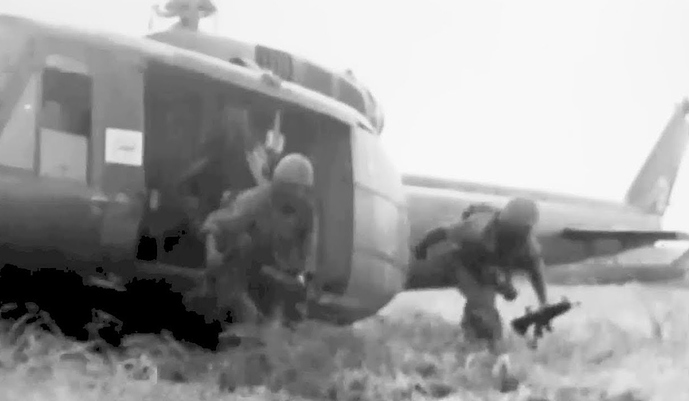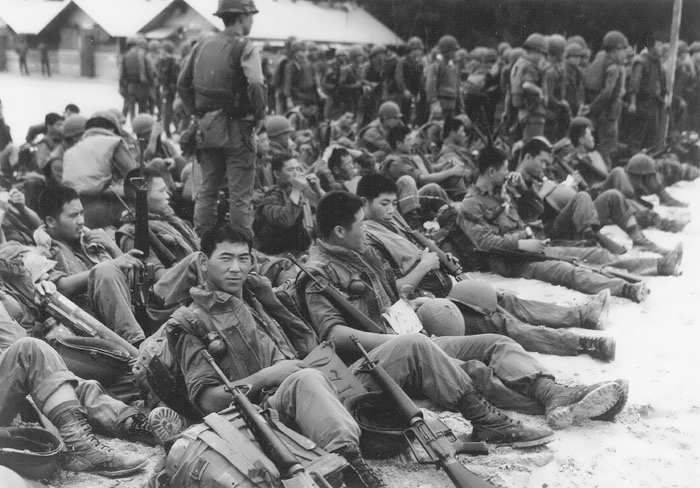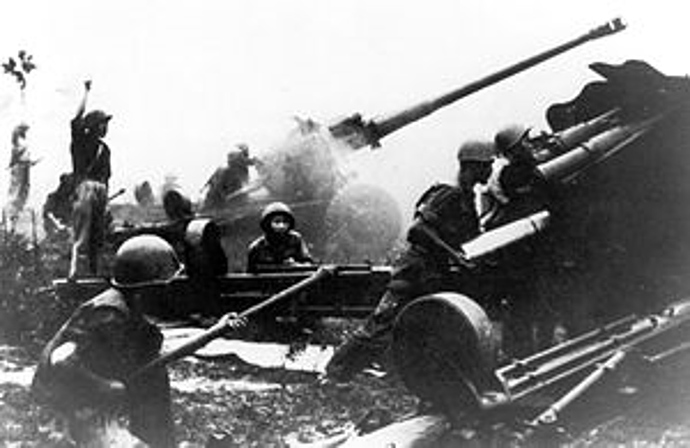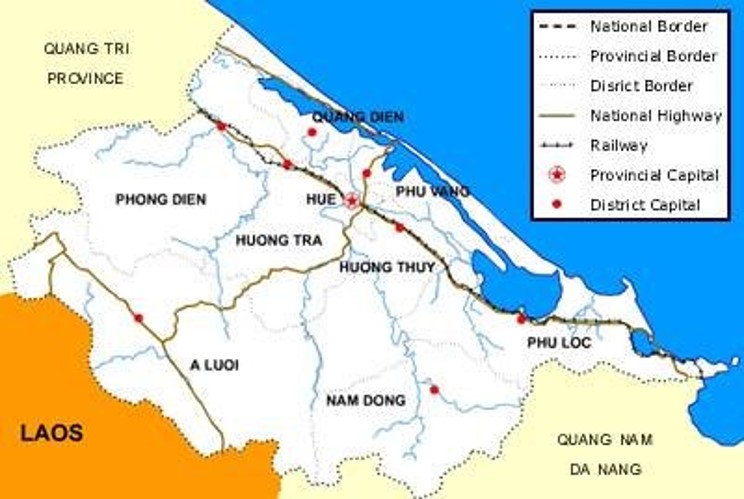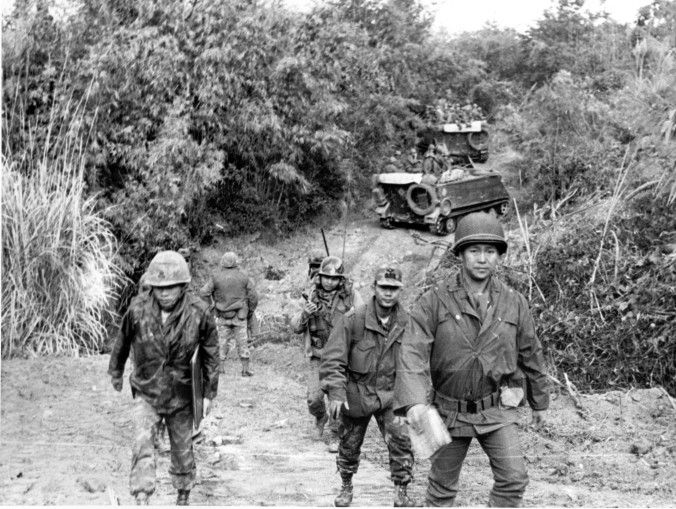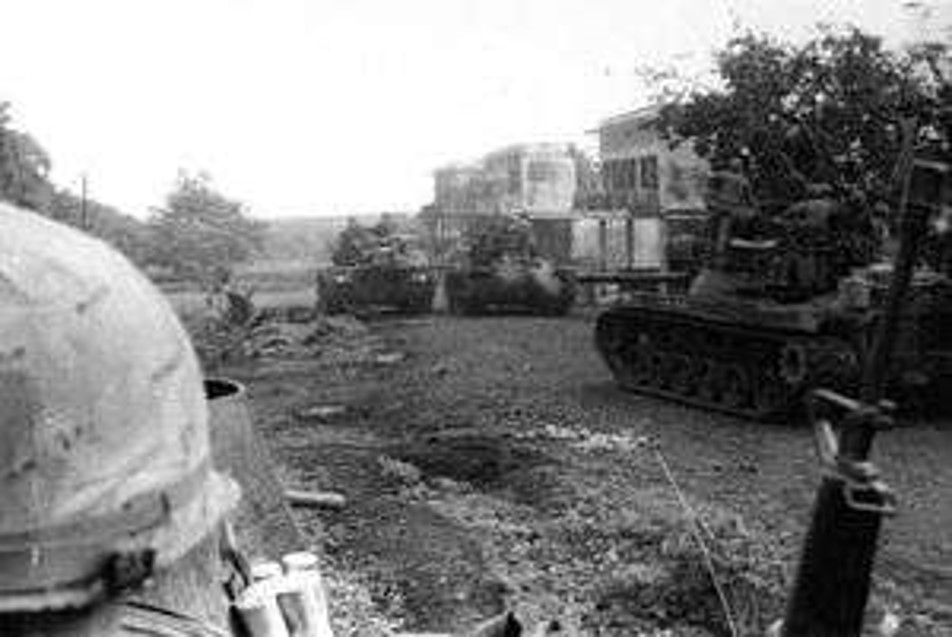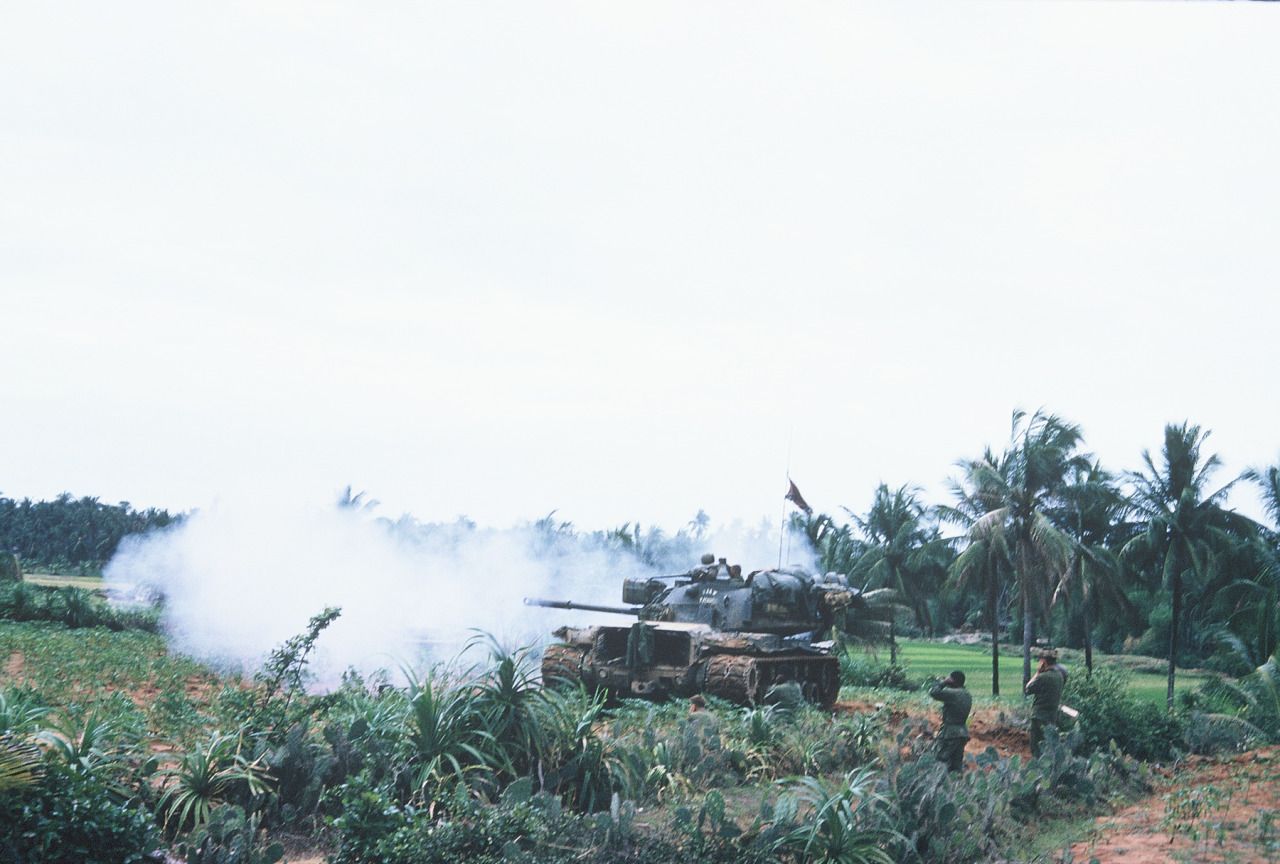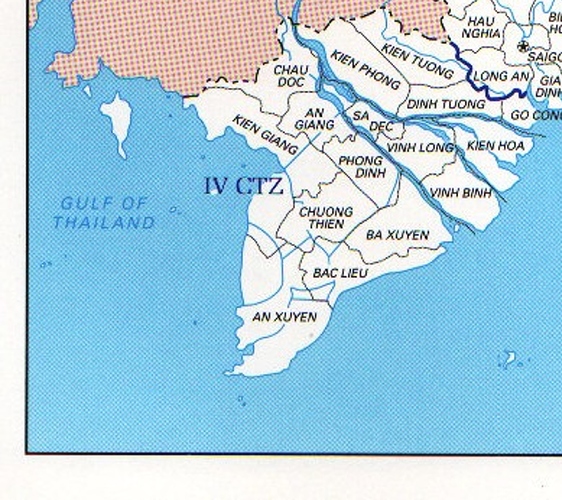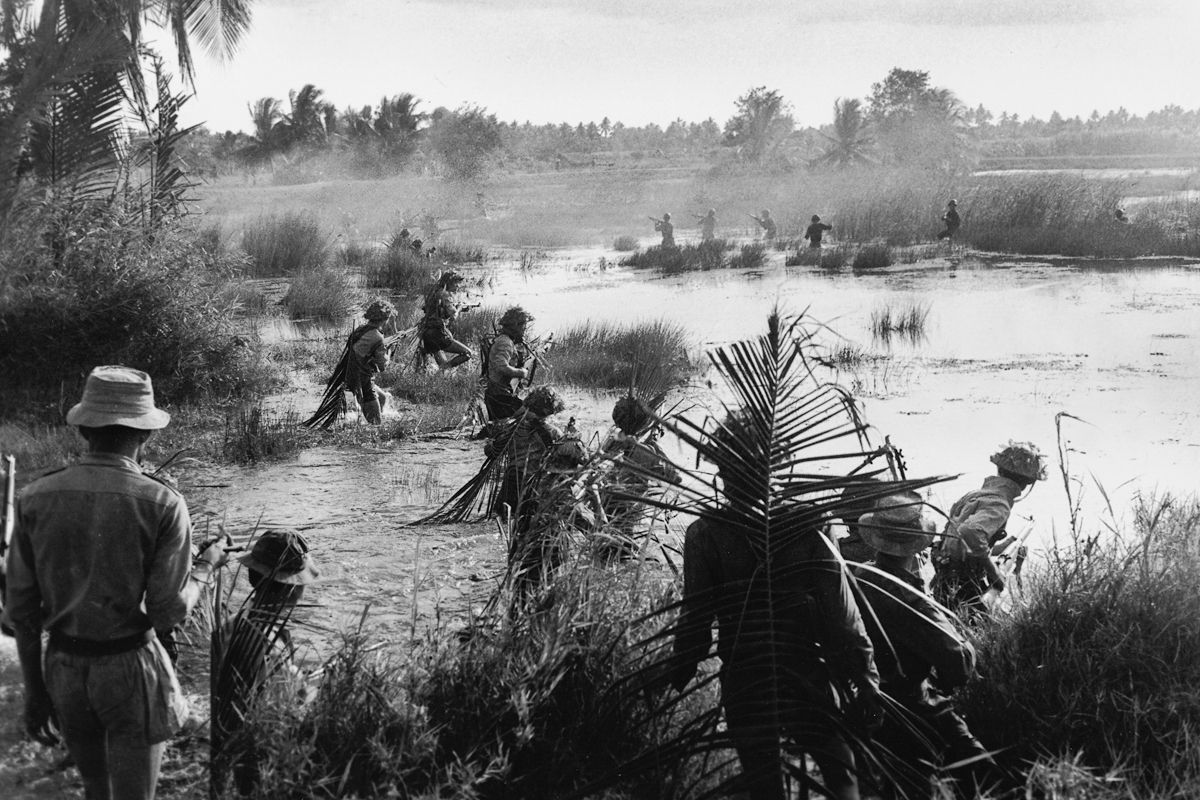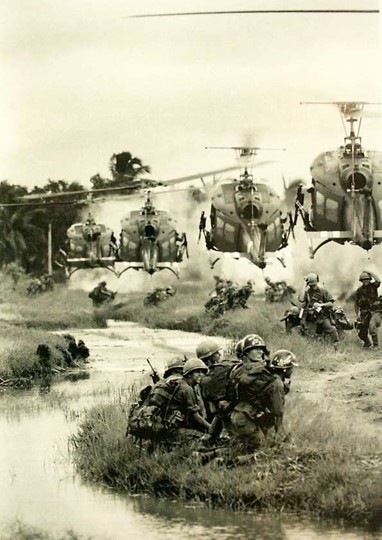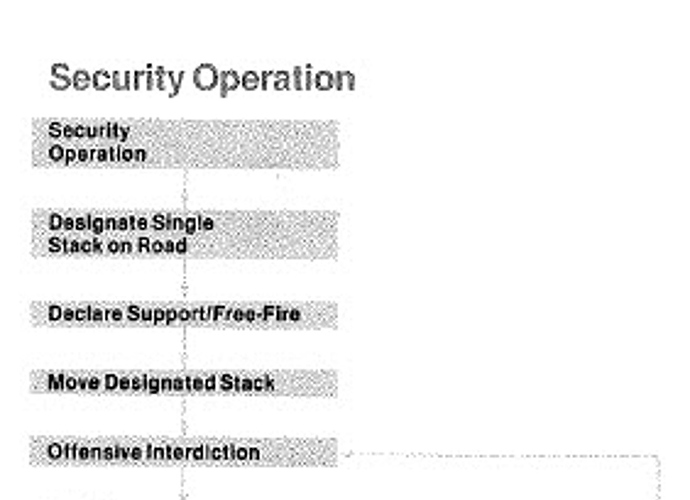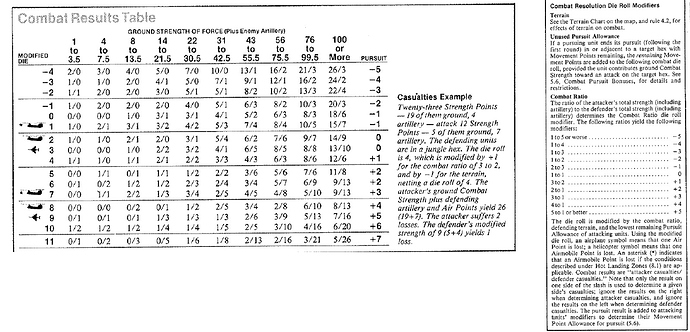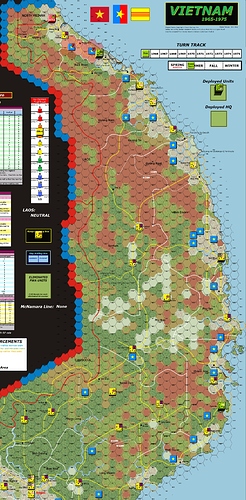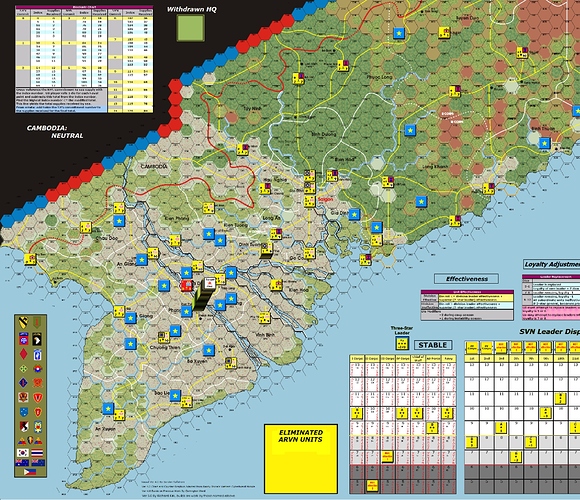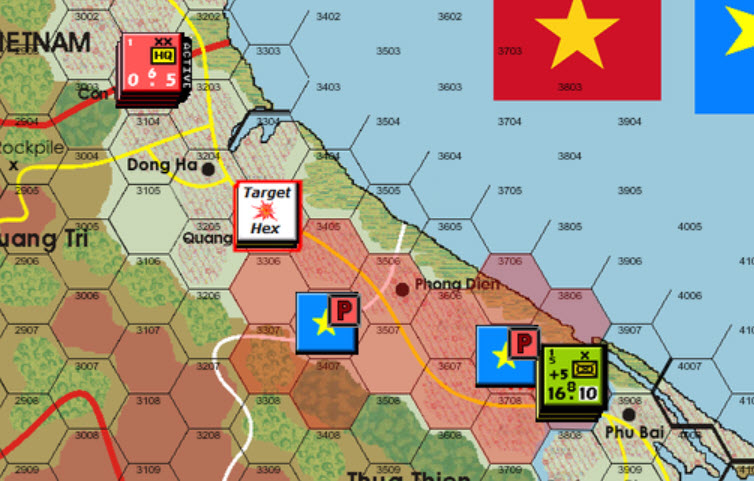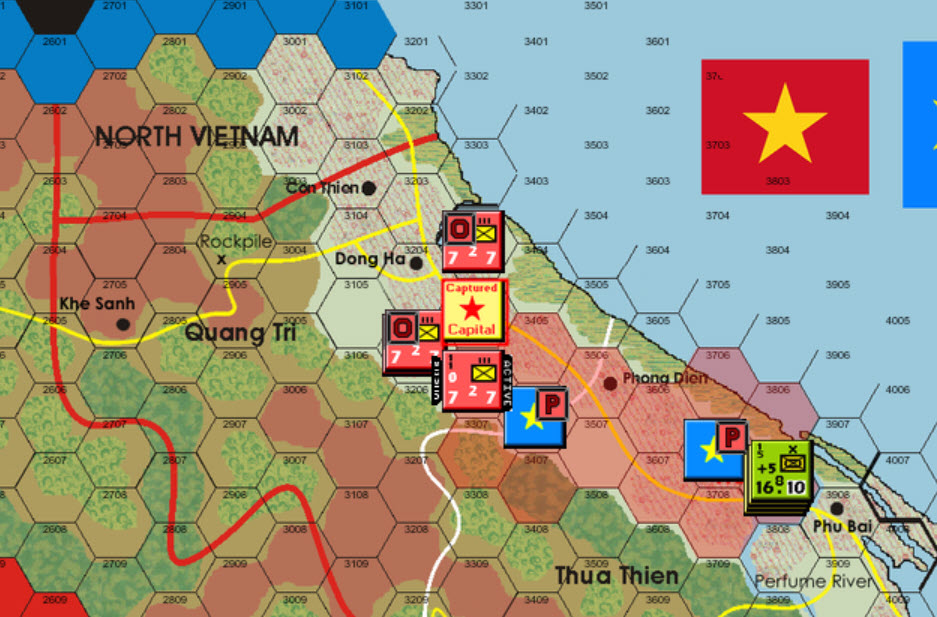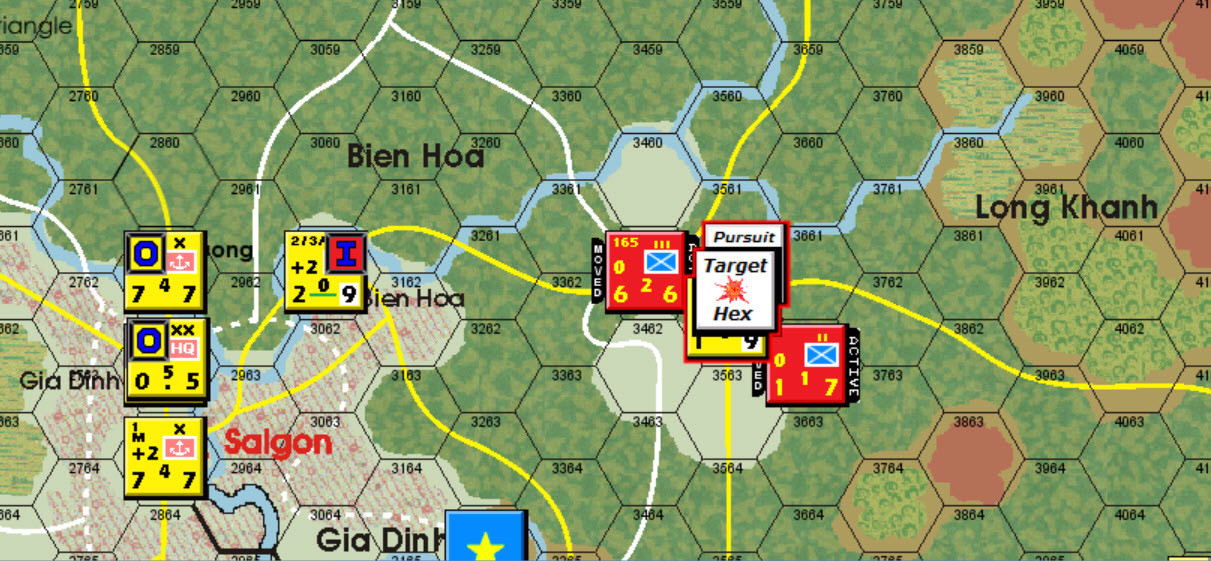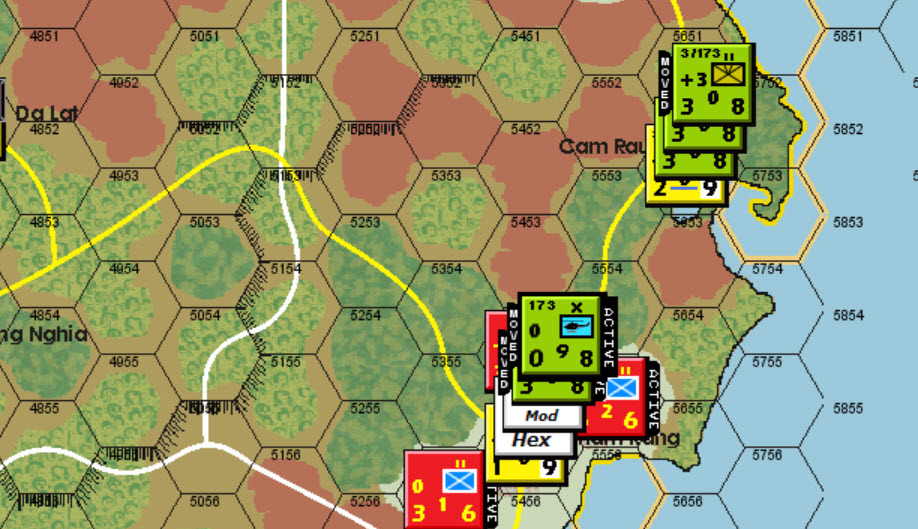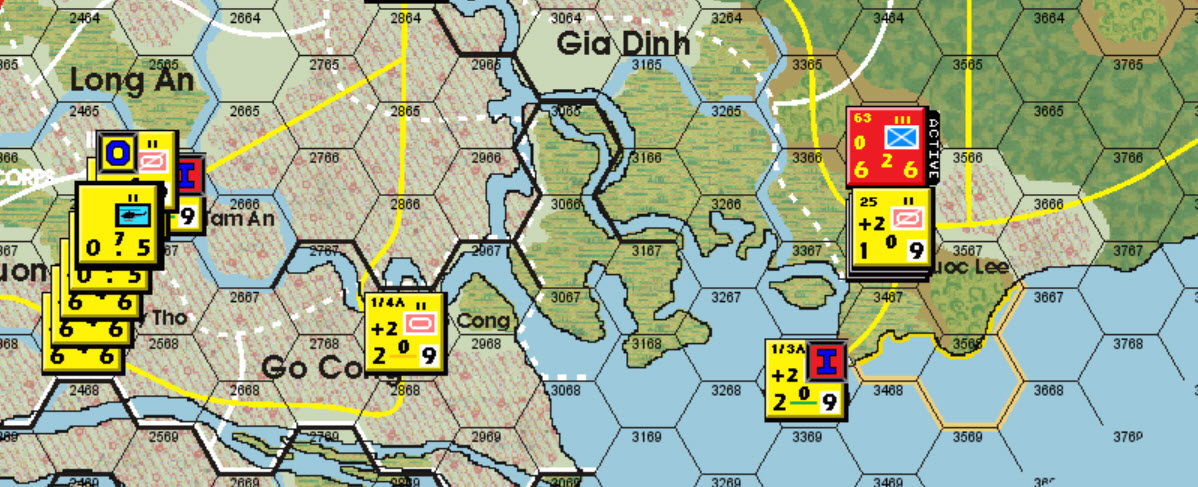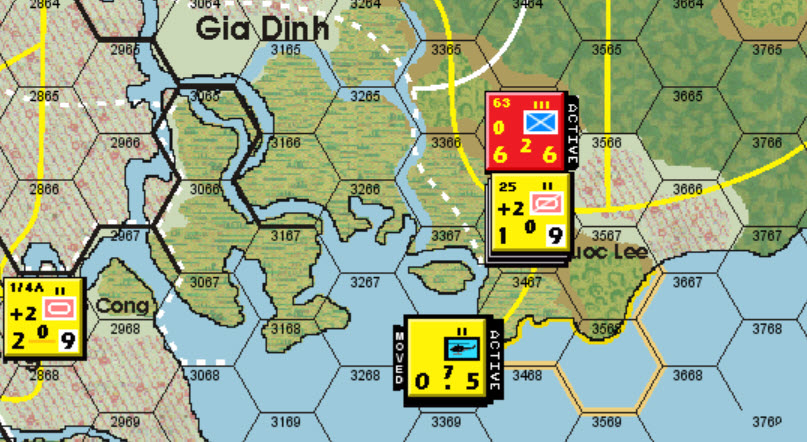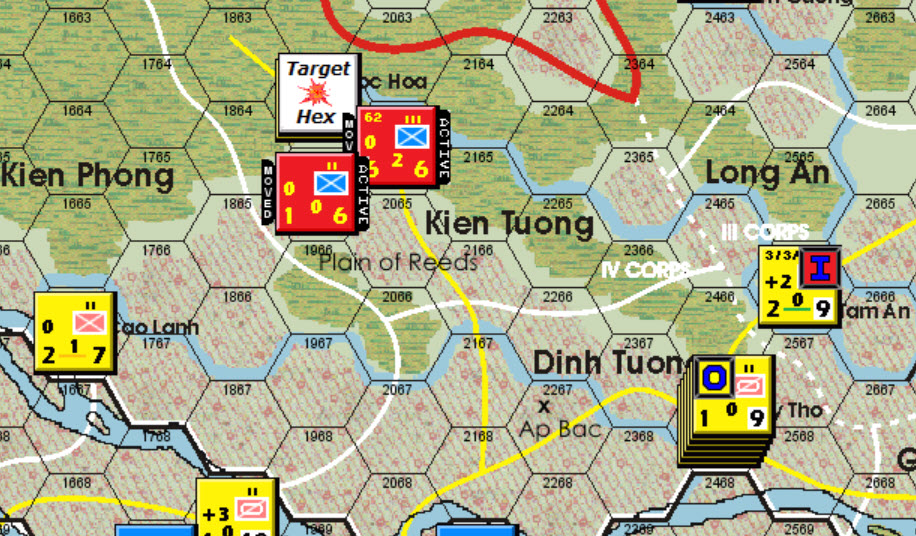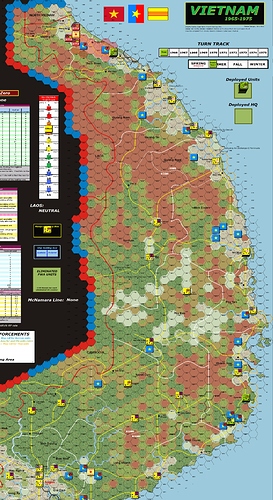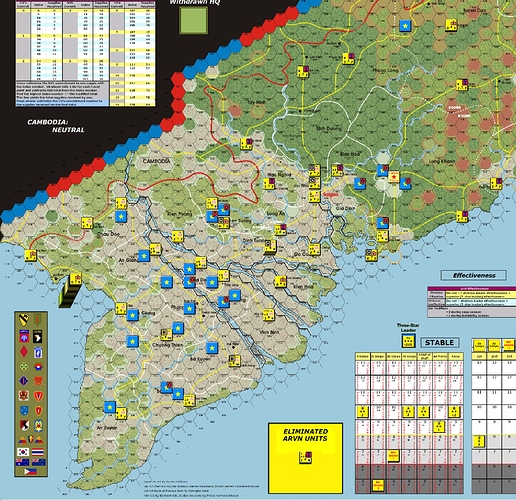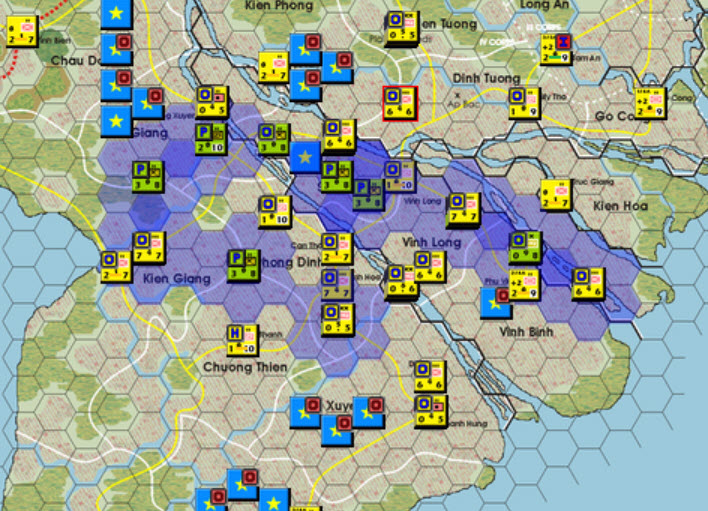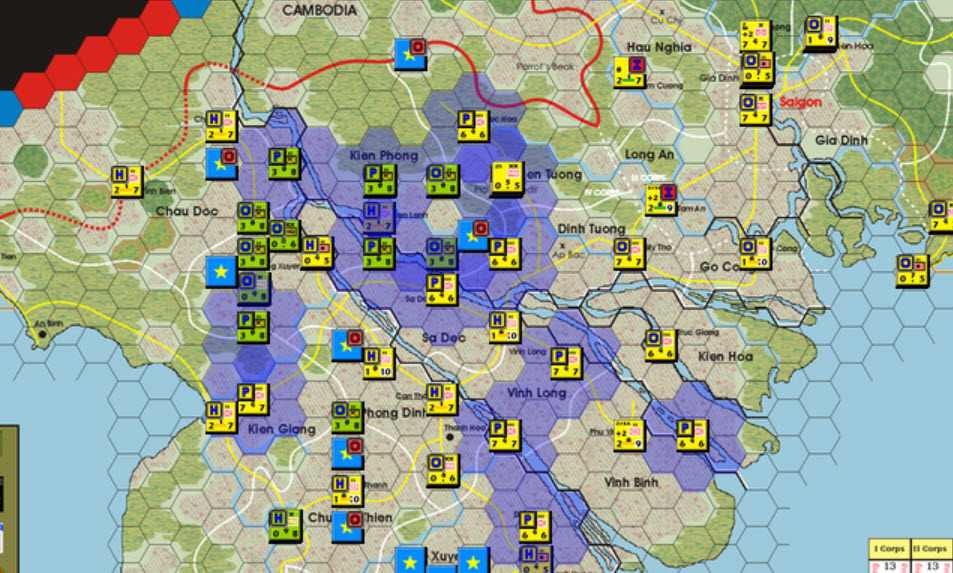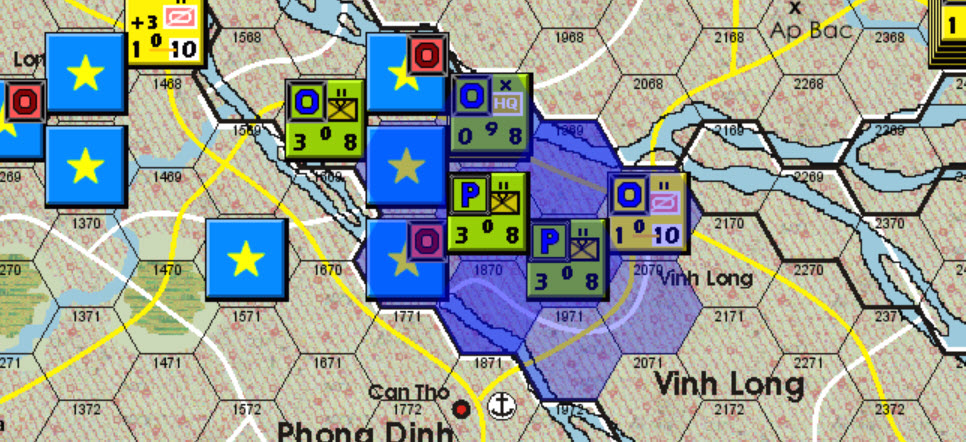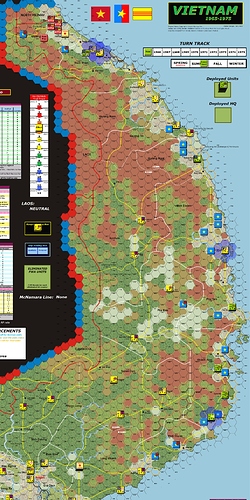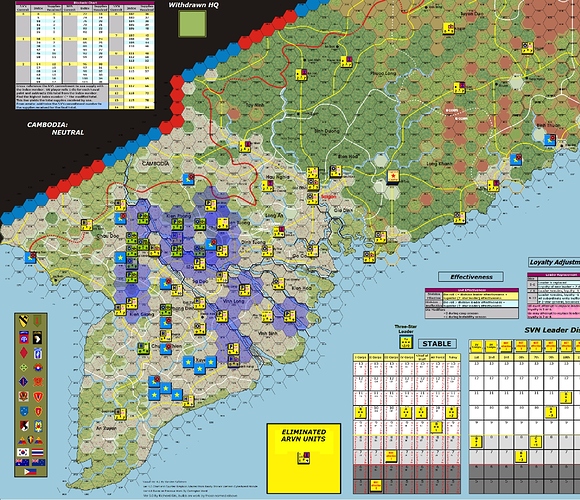I Can’t Help Myself
Vietnam 1965-1975
1965 Summer Operations Narrative, Operations Exposition and Summer Operations Status/Commentary
“When you snap your finger or wink your eye, I come a-running to you. I’m tied to your apron strings and there’s nothing that I can do. I can’t help myself. No, I can’t help myself.”
Please hit play before reading and turn to the maximum volume your brain or household will allow.
The Four Tops. “I Can’t Help Myself (Sugar Pie Honey Bunch)”, Motown. Released April 23, 1965. Number-one song on the Billboard Hot 100 June 12 to June 19 and from June 26 to July 3 in 1965
Tấn Công Mùa Hè và Nổi dậy Lê Độ Mậu Thân 1965 (The Summer Offensive and Le Do Uprising of 1965)
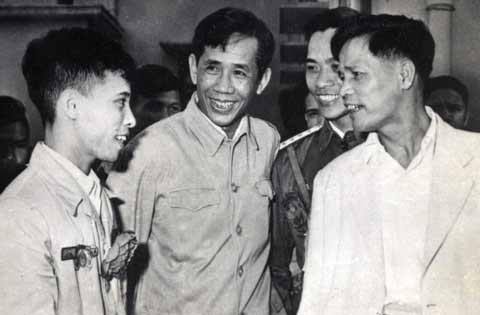
At the end of March, during its 11th Plenum, the Party Central Committee in Hanoi resolved to accelerate the decisive campaign, with the objective of winning the war by means of a summer-fall offensive. Lê Duẩn, leader of the Aggressive War faction, and Nguyễn Chí Thanh, General Secretary of COSVN and Political Commissar of the Liberation Army of the South, had both overcome General Giáp’s objections and dominated the meeting. Nation-wide attacks would be conducted in the hopes of toppling the criminal regime in the South, with the goal of seizing provincial capitals and inflicting maximum damage upon the South’s military before the Americans could arrive in force. While US Ground troops were disembarking and preparing for operations at their respective disembarkation ports, attacks were launched against: Quang Tri and Tam Kỳ in I Corps, Tuy Hòa and Pham Rang in II Corps, Xuân Lộc and Phước Loc in III Corps, Cần Thơ and Mộc Hóa in IV Corps.
The attack on Quang Tri, conducted by elements of the 1 PAVN Division, staging from the communist-occupied abandoned hamlet of Con Thien, just south of the Demilitarized Zone, was an unqualified success. The Armored Cavalry Squadron of the 3 ARVN Division was destroyed, and the provincial capital was taken.
The attack on Xuan Loc went similarly, the attack, launched at 0300 on June 5 was conducted by the 165 PLAF Regiment and the 3 Xuan Loc Provincial Battalion. The Armored Cavalry Squadron of the 21 ARVN Division was caught in its barracks, and the capital was overrun. Most of the Squadron survived, but 40+ armored cars and M113 APCs were destroyed in their vehicle depots.
The other attacks were repulsed, as the ARVN forces staved off initial attacks, sometimes by two PLAF Regiments, but took minimal losses in the initial days’ combats, and defensive reserves rushed to the defense of the locations, resulting in later losses by the VC. Notable among these was Operation Coastal Angel, a deployment of 2 BN and HQ Elements of the 173rd Airborne to Pham Rang from their arrival port in Cam Ranh Bay, 4 days after landing. As well, the Divisional Artillery elements of the ARVN Airborne Division was airlifted to Tuy Hoa where it defied an attack by the 1 PLAF Regiment and two PLAF Battalions with heavy losses for the VC.
However, these successes and setbacks were minor in comparison with the rocket and artillery attacks on Can Tho. In April and May nine North Vietnamese trawlers, illegally flagged as Indian ships, departed Sihanoukville, where they had rendezvoused to pick up a special cargo: enough Soviet and Chinese 122mm Artillery pieces, 160mm Mortars and Rocket Launchers to provide the artillery component to three VC Divisions as their Artillery Regiments. The freighters successfully evaded US and South Vietnamese Naval Patrols and were able to unload their cargo into the waiting hands of PLAF logistics units on the beaches of South Vietnam. Six trawlers unloaded in Vinh Binh Province in IV Corps and the other three in Quang Ngai province in I Corps. Simultaneous to these efforts, advance crews and support personnel in Vinh Binh and Quang Ngai were trained in use and operation using mock-ups and similar, older equipment. By early June two Artillery regiments were positioned in range of the embarkation port at Can Tho in IV Corps, and another near Da Nang in I Corps.
On June 4 the 1 & 23 ARVN Divisions joined the 101st Airborne Division in Can Tho. The 101st had arrived on June 1, and just disembarked, organizing itself for the summer campaign. As well, eleven ARVN replacement Battalions were gathered in tents and Quonset Huts, ready to provide replacements for losses expected in the upcoming campaign in IV Corps.
At 0330 on June 5, the two PLAF Artillery Regiments began shelling the ARVN facilities. Large petroleum storage tanks and ammunition depots were set alight, causing massive explosions and fires quickly spread to the ARVN replacement encampments near the Mekong River. The fires lasted all day and began to subside, with great exertions by firefighting teams, by evening. However, in the shelling and fires, approximately 1,500 ARVN soldiers were casualties. Some estimates placed the losses as high as 2,000.
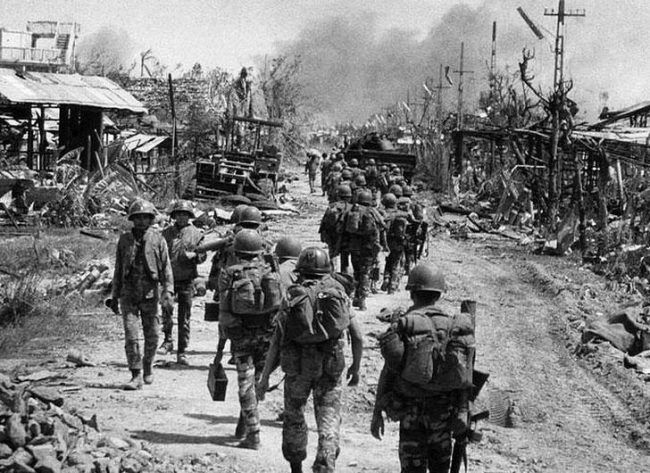
Civilian casualties were unknown as well but were estimated at 5,000. After what the International press termed “Dresden in the Delta” and the country-wide offensive, hopes for the Summer were dampened in the eyes of some MACV Staff Officers. Would the ARVN be able to effectively contribute to the upcoming Operation Bastogne/ Hổ Giận ( Angry Tiger ) in IV Corps?
A Cautious Summer North of Saigon
In I, II and II Corps, US and ARVN Forces stayed mainly on the defensive in the Summer of 1965. The exceptions was Operation Independence/Operation Cảnh Báo Quyết Lliệt ( Fierce Warning ) conducted in I Corps and Operation Big Express, a US Road Clearing and Security Operation focused East of Saigon along National Route 1 in Long Khanh Province in III Corps.
Operation Independence/Operation Cảnh Báo Quyết Lliệt ( Fierce Warning ) was a combined Search and Destroy operation involving the 1st/5th Infantry (Mech) and the 22 ARVN Division in the vicinity of Phong Dien. near the border of Quang Tri and Thua Thien provinces. On July 1, the 42 RGT/22 ARVN, supported by ARVN Rangers and the divisional Artillery based in Hue, launched an attack against the patrolling VC 5 Quang Tri Provincial Battalion 5 Miles Southeast of Phong Dien. While the VC were pinned by the Regiment, and interdicting fire forced them to fight, they suffered light casualties, as did the ARVN. However, the Battalion was forced to retreat northward into communist occupied Quang Tri Province, near the DMZ, opening the way for further operations along National Route 1. On July 3, the 22 ARVN Divisional Artillery supported a combined ground and air assault against an unknown patrolling VC Unit 5 miles Southeast of Phong Dien.
The enemy force avoided contact and retreated Northeast, joining the 1 RGT/1 PAVN Division in Grasslands South of Quang Tri. Finally, on July 4, the 1st/5th Infantry (Mech) moved North of Hue and, provided close air support by A-4C Skyhawks, attacked the positions of the 1 RGT/1 PAVN Division and the now identified 27 PLAF Battalion south of Quang Tri. In a sharp battle that lasted until after dusk, the US took 62 casualties, and forced the communist units retreat Northwest, away from Thua Thien Province, fulfilling MACV’s ultimate objective for this operation. The 1st/5th Infantry (Mech) rebased to refit at Phong Dien, by July 8, guarding against any further movement south by the PAVN.
After refitting, on July 22, the 1st/5th Infantry (Mech) was tasked by MACV to speed southwards from Phong Dien, and then inland, West via National Route 19, through Kontum Province in II Corps and then South via National Route 14 near the Cambodian Border, then through Saigon and to Xuan Loc from the East. On August 5 the Brigade, assigned close air support by newly arrived F4E Phantoms, encountered a roadblock 5 miles east of Xuan Loc, manned by VC elements identified as the 165 PLAF Regiment. A cautious engagement ensued, and after two days, the PLAF withdrew to the North, after which the Brigade returned to Phong Dien by August 16. Two F4E’s were lost to Air Defense Fire.
Operation Bastogne/ Hổ Giận (Angry Tiger) I
Operation Bastogne/ Hổ Giận was a Summer-long operation in IV Corps with Sa Dec Province as the focal point, involving the 101st Airborne Division, the 1 ARVN Division, the 23 ARVN Division, IV Corps Subordinate Battalions and ARVN Chief of Staff Independent Artillery Units. The operation’s concept was divided into two Phases: ARVN Attack, US Cordon in Bastogne I/ Hổ Giận I and ARVN Cordon/US Attack in Bastogne II/ Hổ Giận II. The goals of the operation was to disrupt and if possible destroy Viet Cong concentrations in the Central Mekong Delta, but primarily to divide and push these concentrations into pockets; in the Southern Delta and near the Cambodia border, where they could be eliminated or cleared from South Vietnam in the Fall, when more support and follow-on clearing forces (the 1st Air Cavalry Division) arrive. The Operation began June 10, 1965.
Bastogne/ Hổ Giận I opened with the 1 RGT/1 ARVN making contact south of Can Tho with the 2 Sa Dec Provincial battalion, which engaged the Regiment, inflicting light casualties and then retreated Southward. Elements of the 3rd Brigade/101st, supported by ARVN Rangers then conducted a Ground/Air Assault operation targeting VC elements in Vinh Long Province. The operation uncovered a large supply depot, containing equipment, stores and documuments, which when exploited indicated the planning and dispositions of units infiltrated into the Delta for the VC attack on Can Tho. This intelligence enabled the operating forces to conduct follow-on operations into northern Sa Dec Province, adding to the cordon line being established there. Other elements of the 3rd Bde/101st then conducted Clear and Secure Operations against VC unit concentrations north of Can Tho, clearing these units and establishing patrols, continuing to create the cordon line in this area.
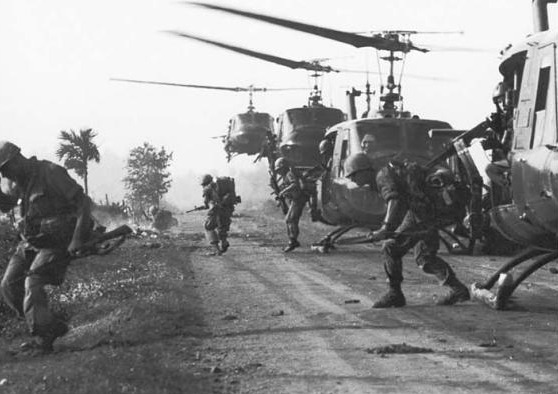
The 1st Bde/101st then conducted a Clear and Secure Operation in An Giang Province, against enemy concentrations there. No enemy contact was made, but the enemy was cleared and again, US Battalions conducted patrols after the operation, continuing the cordon. These operations were replicated by elements of the 101st until a cordon line was established reaching from the coast of Vinh Binh Province in the Southeast Delta up to Long Xuyen in An Giang Province, and then West-Southwest to Rach Gia in Kien Giang Province, roughly crescent-like in shape. Then a second cordon line extended Southeast from Rach Gia to Ba Xuyen Province on the Eastern Delta coast by June 20.
On June 22, 1 ARVN and 23 ARVN elements, based out of Can Tho engaged VC targets noth of that city in a Search and Destroy Operation and destroyed the 9 PLAF Divisional Artillery Regiment which had shelled Can Tho earlier, after a 3-day running assault that began in Sa Dec Province and ended in Vinh Long Province. Several Combined Us 101st/1 ARVN/23 ARVN Search and Destroy operations of 2 Battalion strength were conducted against a VC target in Vinh Binh Province suspected of being the 8 PLAF Divisional Artillery, but he target evaded contact. By the end of June the 25 ARVN Division, based in My Tho had fanned out to a line extending from western Dinh Tuong Province to Moc Hoa, near the Parrot’s Beak on the Cambodian border.
COSVN Reactions, Bastogne/ Hổ Giận (Angry Tiger) II
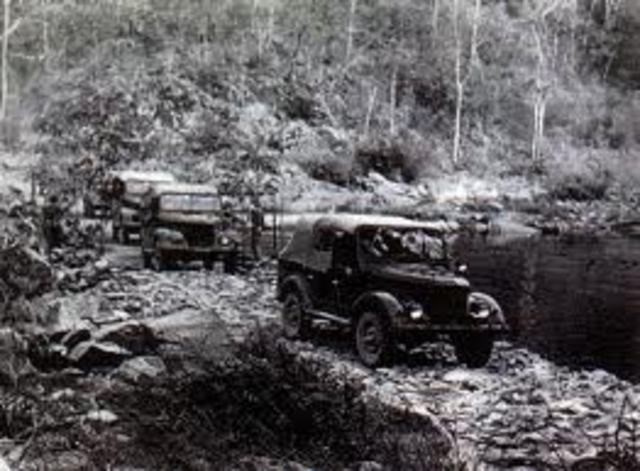
PLAF and Provincial VC forces then began to spread out nation-wide, the offensive having been completed. In the Delta, enemy concentrations attempted to move south, into the Cau Mau Peninsula or Northeast, toward the Cambodian border. In I and II Corps, VC units made either for undefended coastal agricultural areas or to defensive territory inland. Of note, however, the 165 PLAF Regiment and several unidentified Viet Cog Battalions in Long Khanh Province moved into the Provincial capital, Xuan Loc and prepared to defend it.
ARVN and 101st Airborne Units switched roles as Summer Operations ended. For Operation Bastogne/ Hổ Giận (Angry Tiger) II, the ARVN established firebases and Patrol cordons in IV Corps, relieving the 101st of those duties. The 101st conducted Search and destroy Operations in Chau Doc Province and Kien Phong Province near the Cambodia Border and inflicted moderate enemy losses for minimal casualties, uncovering the 62 PLAF Regiment in Kien Phong and the 1 Chau Doc Provincial Battalion in that province.
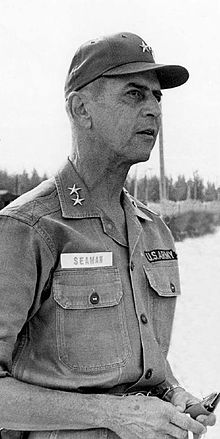
As Summer ended the NLF and the ARVN had taken serious losses, and the US had lost approximately 300 casualties. The Summer NLF Offensive had successes but did not achieve its ultimate goals of taking provincial capitals MACV wasn’t willing to sacrifice at this juncture, other than the Xuan Loc success. As well, their operations in the Delta had taken significant blows and severe disruption. However, the weakness imposed upon the ARVN ability to take casualties by the Attack on Can Tho, combined with the need for ARVN and US forces to situate and position themselves for effective operations had placed a finite limit on what they could accomplish. In Fall, the real test would begin, and Abrams knew it. “This is just a preseason game, a scrimmage.” He told Major General Seaman, his MACV J3 Operations Officer.
Summer Operations Resolution (and Exposition)
Take a breath, get a drink (hard or soft, your choice), and then please hit play before reading and turn to the maximum volume your brain or household will allow.
The Beach Boys (and The Wrecking Crew). “Help Me, Rhonda”, Two weeks at number one on the Billboard 100, from May 29 – June 12, 1965.
The Operations Sequence
“When eating an elephant take one bite at a time” – General Creighton Abrams
I’m going to hold off on operations snapshots this Season and give an overview of operations and combat. Then I’ll walk through some game events and statuses. Later, each season, I’ll go into each type of operations (one or two a Season in-depth). When that is done, and every type of operation has been covered, I’ll stick to some operational snapshots each Season highlighting unusual things or Operations that really show the flexibility of the system.
For the Season’s Operations, you do this twice, in two Game Turns.
1 – Support Phase -Self Explanatory. The US player make sure all Air, Airmobile, and Riverine Points are all accurate and reflected properly on the record tracker.
2 – Special Operations Designation Phase: US Player indicates all units on Hold or Patrol. Then the NLF Player does the same. “Hold” doubles the combat and support strength of a unit for defense, for the Game Turn, but makes the unit ineligible for any other operations that Game Turn. Units on Hold also have no Zone of Control – ZoC (ZoCs inhibit enemy movement). “Patrol” doubles the ZoC effect of the Unit on Patrol; it really inhibits enemy movement. Any units that do either are Operations Complete (OC) for the rest of the turn. The only units that can’t patrol are ARVN Battalions and Headquarters (also, they have no ZOC). Everyone can go on Hold. ARVN Ineffective units can do nothing at all except Strategic Movement the whole Season). Note that either player can also place any unit(s) on Hold or Patrol later in the Operations Phase.
3 – Strategic Movement Phase: The US Player (only) may conduct Security Operations, Strategic Movement and/or Naval Movement with any of his units. The US Player may also conduct Security Operations, Strategic Movement and/or Naval Movement later on in the Operations Phase. The NLF Player may conduct Strategic Movement later on in the Operations Phase (the NLF cannot do Security Operations or Naval Movement). Ineffective ARVN Units may only conduct Strategic Movement and may only do so in this Phase. Basically, Strategic Movement allows any FWA unit unlimited Road movement, paying only costs to exit enemy ZOCs or to move off road. A Security Operation is a Strategic Movement, but on the ARVN or US (only, and not together, and only one stack at a time already on a road) then may fight any enemy unit on the roads with impunity. If the NLF retreat, the operation continues. If the US retreats, op over. The US can keep doing them as long as he has movement points. Since he just pays ZOC costs this could occur from the DMZ to the Delta and back again, theoretically. Naval Movement is from port to port in country or from a port to a non-enemy occupied beach. A FWA unit may move it’s full MP allowance (and may be airmobilized) to reach a Port. Then it moves to another Port or Beach. Note- Reaction Movements – Any unit that ends its movement adjacent to an enemy unit or Units), during any of these operations, can trigger a Reaction movement. This allows the unit(s) to then move their full movement allowance.
Any unit can also do any of these operations during the Operations Phase. NLF Strategic Movement allows them to move a unit up to three times its movement value.
4 – Operations Phase – This is the Heart of the Game Turn. First, the NLF decides who is going to Operate. Then the Operating player may do any of the operations outlined above, as well as:
Search and Destroy Operation (both Players): Basically, movement and then Attack by designated Units.
Clear and Secure Operation (US Player Only): A Search and Destroy, sacrificing some mobility, where the units can end the Operation on Hold or Patrol, at his choice.
Note – Next Season we will highlight an S & D Operation step by step.
Bombardment: US Air Points, US Naval Units or either players’ Artillery Units (that have not moved) may bombard an enemy unit.
Offensive Reserves (US Player Only): Units may join a Search and Destroy or Clear and Secure Operation already in progress.
Defensive Reserves (US Player Only): Units may join the defense against an NLF Search and Destroy Operation already in progress.
Note- any operation could conceivable have all that side’s units and all it’s support allocated to it. If a Player wants to do that. Your only limit is yourself.
Oh, by the way, this is how Combat works. Odds are determined, and then a d6 rolled with appropriate modifiers. You add your manpower and the enemy’s firepower. Attacker Casualties to the right, Defender to the left. An Air Point or Helicopter picture basically means that if any were assigned to the operation, they are lost. The Pursuit modifier is then granted. The Defender retreats (if he wants) and the attacker may pursue, using his organic pursuit modifier added to the roll result. Unused pursuit is a bonus to the next round’s attack (or a penalty). If you had 3 units pursuing, for example, and they end with 3, 4, and 5 pursuit points, respectively, and they all attack you use the lowest modifier (3, above). Sometimes, it’s better in later rounds to take a low odds attack with a unit hot-fulla tactical advantage (a high pursuit modifier).
5 – Game Turn Indication Phase: This is Just the End of the Game Turn. This occurs when the NLF Player Declines to Operate, the US Player Declines, and the NLF Player Declines again. Theoretically, every single Unit on Map May conduct/participate in any of the above before this occurs, but they do not have to.
Support At Start of Operations
The NLF Summer 1965 Offensive
I and II Corps at Beginning of Operations.
III and IV Corps at Beginning of Operations.
Attacks
Battle of Quang Tri
Capture of Quang Tri
Battle of Tuy Hoa

Battle of Xuan Loc
Battle of Xuan Loc-Captured
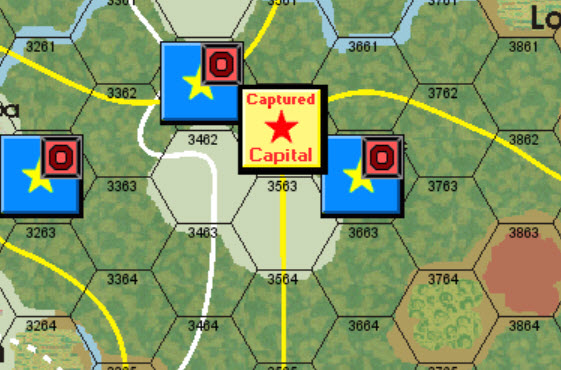
Battle of Pham Rang
Battle of Phouc Loc
Battle of Phouc Loc -Defended
Battle of Moc Ha
Battle of Moc Ha-Defended 3 losses for VC
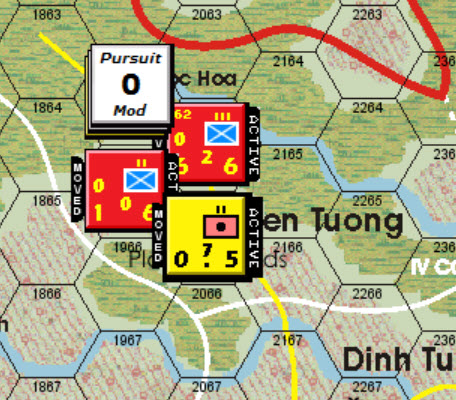
Bombardment of Can Tho Part 1, 8 ARVN Replacements lost.
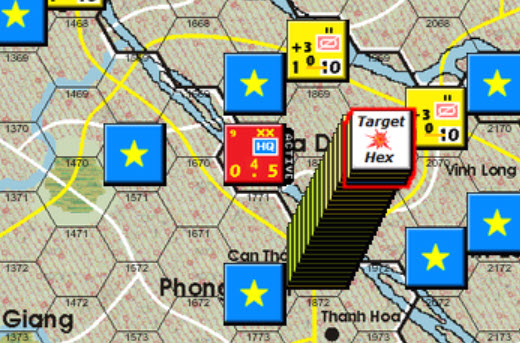
Bombardment of Can Tho Part 2, ANOTHER 8 ARVN Replacements lost.
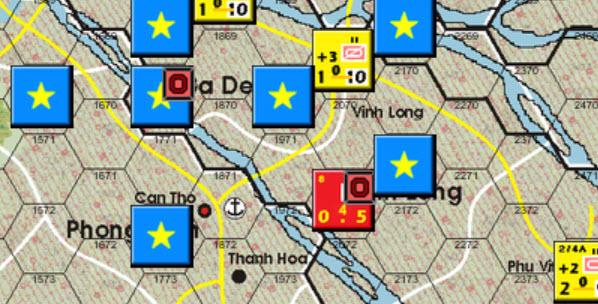
I and II Corps at End of Summer NLF Offensive
III and IV Corps at End of NLF Summer Offensive
Commentary – The NLF Offensive didn’t take me by surprise. I had written off Quang Tri for now, and for a few seasons. I also knew he’d take another capital, and it was an easy decision; if there were no Defensive Reserves in range, I’d just lose the ARVN Cav or Armor Battalion for 2 or 2 Supply cost total (1/7 or 2/7 of a US Commitment point each, but no manpower lost).
My limits were: I wouldn’t let him get three capitals (-1 to US Morale and SVN Morale next interphase) or get a Capital in IV Corps. So basically, Quang Tri and one other. That is what happened. So, I was pleased.
What I fully did NOT expect was That he would build Artillery in range of Can Tho, after I had arrived in country with the 101st and built two FOUR REGIMENT ARVN Divisions there. Now, the ports of Hue, Da Nang, Chu Lai, Qui Nonh, Nha Trang, Cam Ranh Bay, Vung Tau, Saigon, My Tho and Can Tho are
The only places new US Units can arrive.
The only places new ARVN Units can be built.
So, if I was going to do any operations in IV Corps, I have to arrive in My Tho and Can Tho. And Can Tho is central. So I didn’t have a lot of choice in the matter, based on what I wanted to do this Summer. Sure, I could have Strategically moved them all out in the countryside, but then I wouldn’t have done any operations in the first Game Turn of Summer Operations.
What Curt did was build Supply Conduits (more later) in the Delta. Basically these allow him to exceed provincial build limits for him each Season (the NLF are limited by the number of population they control in a Province for their builds there). So he expended a LOT of resources to make this happen. And a LOT more to build all these Regiments. Funnily enough I went Regiment heavy early in the last game we played and surprised him (and lost the game as the NLF).
So, there is no way for me to describe how shocked and aghast I was at losing 16 (??!!??) ARVN Replacements to the first two NLF Operations, taking me from 24 to 8. Now I was going to have to worry about every ARVN Replacement loss I took for the rest of the Season. If I run out, he can just ding a Regiment, and it pops like a balloon – the whole Regiment would be lost.
Now what this is a testament to is how damned engaging and interesting this game is as a game. Two players, very experienced with the game, other players, and each other, and one can still spring a complete, pants-filling surprise on the other.
That is a good game.
End Summer 1 Cordon in IV Corps
End Summer 2 cordon in IV Cops
After C & S Operation
Commentary – At the end of Summer, things are bearable. Now that I am in position, and he has emptied his shot locker for that Offensive, he has a lot of big, fat juicy Regiments out there…. he might break them down into Battalions, but that expends an extra cost; as it was more expensive to build them. He took a lot of Replacement losses and the units he lost are expensive.
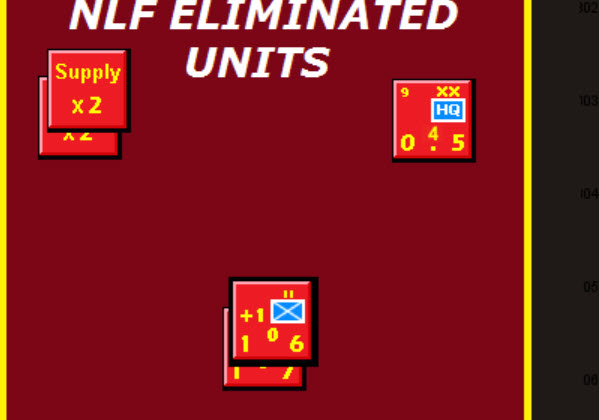
As well, I have the locations of all the Regiments and the two divisional Headquarters seared in my brain. With the arrival of the 1st Air Cav next Season and more support and all my units in the field, it’ll be time for the counteroffensive.
Another down side to going Regiment heavy is that he’ll impact the Pacification Struggle (which we’ll be introduced to next Season) far less than he would if he had gone “Giap” and just built battalions. Sure, I’ll pay for my Free Fire Zone and the captured Capital there in Quang Tri, as well as in Xuan Loc, but Pacification modifiers will be about as good as they can be for me at this stage. That is all based on NLF Presence and SVN Morale. Better to herd the VC to a Few provinces and succeed elsewhere and then deal with a few problem provinces later. Oh, BTW, all US Firepower is halved, unless a Province is declared Free Fire…which hurts Pacification there. And if an NLF unit is on the border of two provinces, and one is Free Fire and one isn’t, guess who gets to choose where that Battalion is? You guessed it….
I and II Corps at End of Summer Operations
III and IV Corps at End of Summer Operations
Support at End of Season
“Well since she put me down I’ve been out doin’ in my head. I come in late at night and in the mornin’ I just lay in bed. Well, Rhonda you look so fine (look so fine) and I know it wouldn’t take much time for you to help me Rhonda, help me get her out of my heart.”
Next: What will Pacification Bring? What will happen when LBJ meets Ky at the Presidio of San Francisco? What will the next stage of Operation Freedom Partner bring to South Vietnam? What is ARVN Morale like?
By the way, if anyone has any questions about the game or the narrative: rules, why who did what, what’s happening in the History, stuff about the music, really anything, feel free. It won’t disturb or “clutter” anything, and the initial post will be updated with bookmark quick links from time to time. I’m happy for this to be an interactive, discursive experience. If I wanted this diary chiseled on impenetrable stone, I would have blogged it. Talking about stuff here, well, it’s fun.
